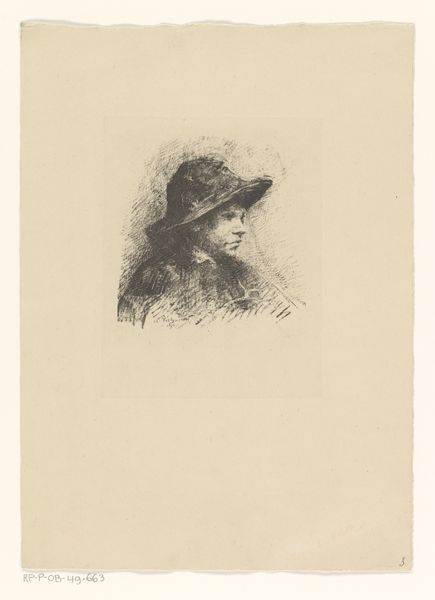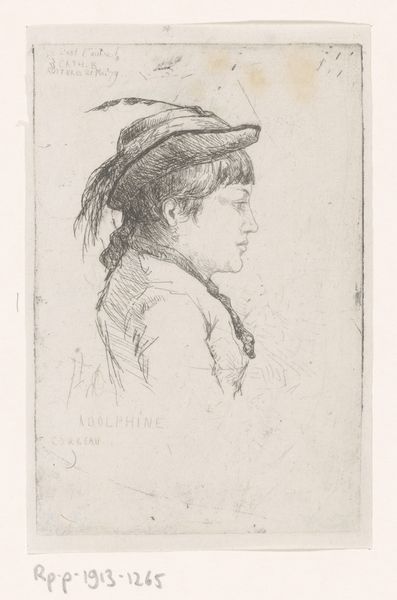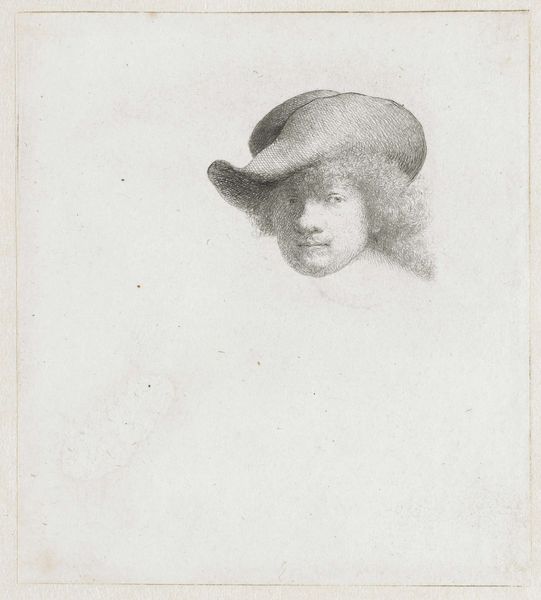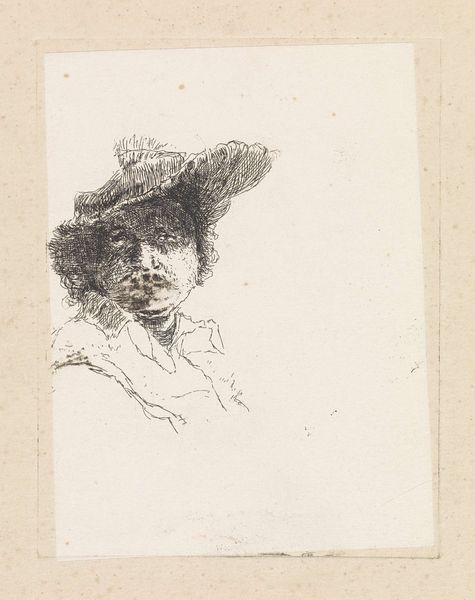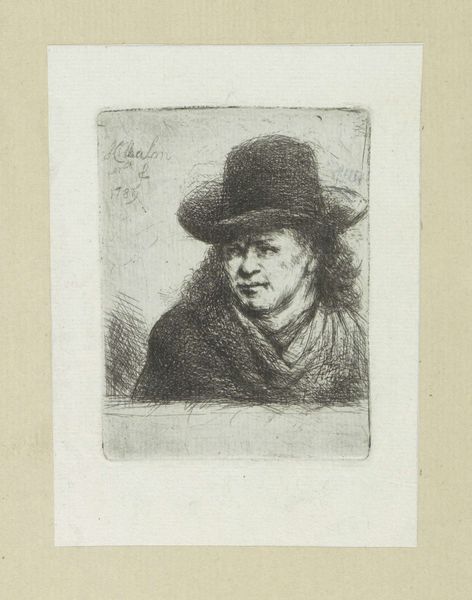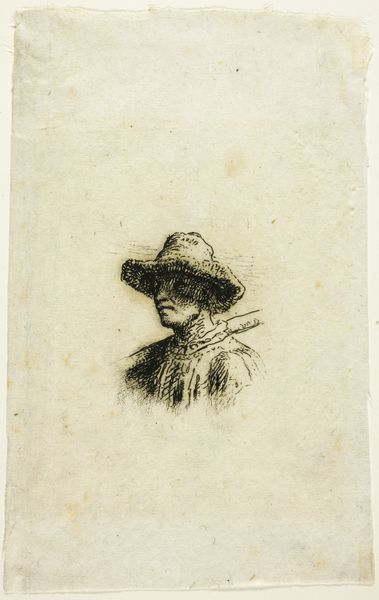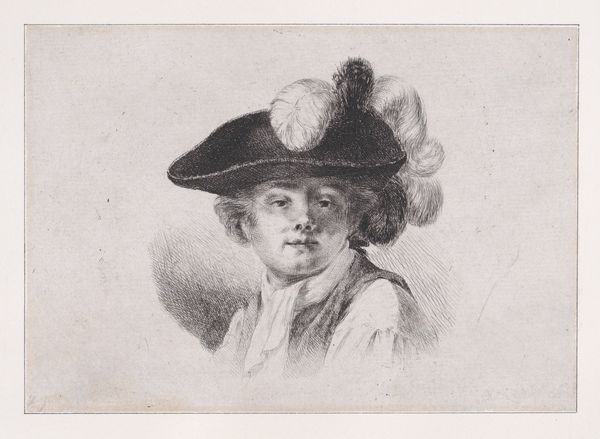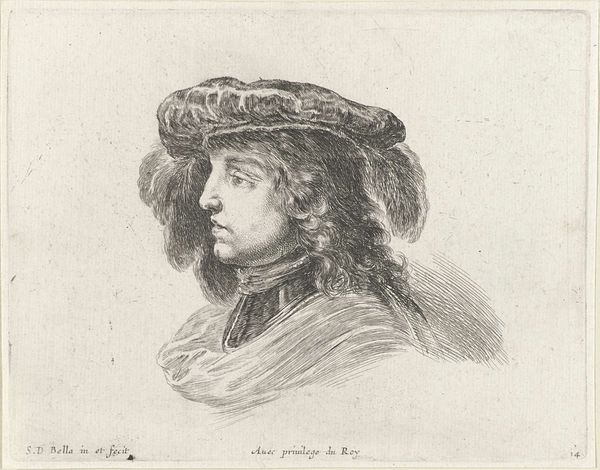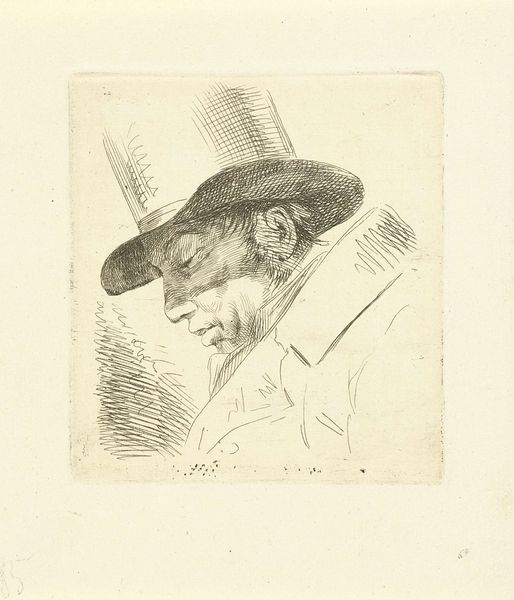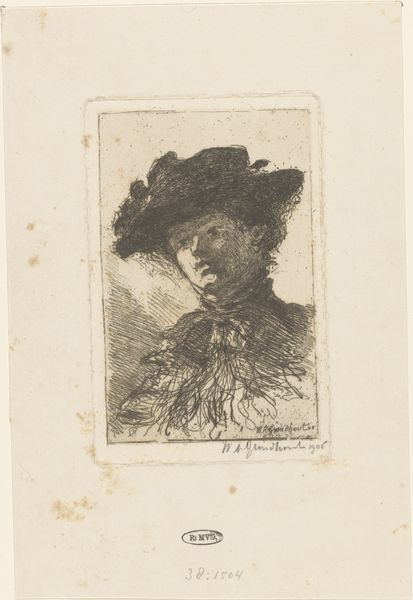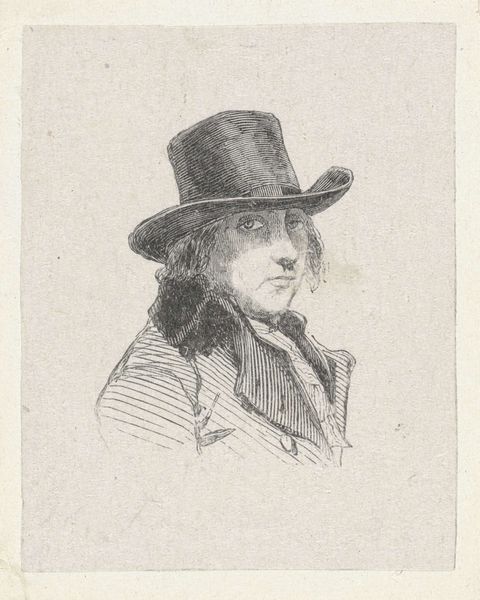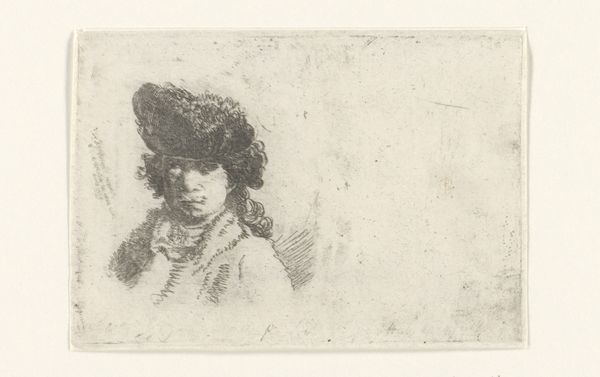
Dimensions: height 159 mm, width 128 mm
Copyright: Rijks Museum: Open Domain
Curator: Look at this fascinating drawing, "Studieblad met portretten van Louis Bernard Coclers en zijn familie," created around 1780 by Louis Bernard Coclers himself. It’s rendered using pen and ink. Editor: The first thing that strikes me is how raw it feels. There's an immediate sense of intimacy and something almost...unfinished about it. You can practically see the hand of the artist moving across the paper. Curator: The Coclers family occupied an interesting position. They were part of the rising bourgeois, benefitting from trades with the Indies, in particular Indonesia. This allowed Coclers, who resided in present-day Maastricht, to live quite comfortably. I wonder how he conceptualized the family, as the head of the household. This was after all, a time when familial and social expectations were in tremendous upheaval. Editor: It’s interesting you frame it like that. Thinking materially, pen and ink as a medium speaks volumes, especially in the late 18th century. Consider the societal shifts occurring: the rise of printed media, the importance of authorship, and the development of drawing as an activity for both artisans, amateur aristocrats, and artists. Coclers utilized printmaking which also was used to replicate images for distribution to the wider public. What can you say about the material context of this family's status? Curator: Their social identity was tied up with new flows of commerce and societal hierarchies, even new family structures in general. He chose to depict his family, claiming a name and status in portrait form. Editor: Yes, the distribution and control of images were key in constructing family dynasties and social identity. It begs the question: What statement did Coclers make by utilizing a somewhat ‘rough’ and unrefined technique like a pencil sketch, while depicting his lineage? Curator: Perhaps there was a conscious effort to create something that feels spontaneous and real amidst those social constraints of wealth, as a growing market demand, fueled by commercial society, impacted how his sitters wished to be represented. Or maybe Coclers saw himself in this period of turmoil, where lines of gender and social identity become newly mutable. Editor: Exactly. The materials and the means of their reproduction are never neutral; they actively shape meaning and reflect both the aspirations and the anxieties of their time. It prompts questions about artistic skill, market, class, gender roles, artistic patronage and societal shift, doesn’t it? Curator: Absolutely. Seeing this drawing through the lens of those social contexts really deepens our understanding of its complexity and enduring relevance. Editor: I agree. Looking at it materially offers insight to broader concepts that go well beyond art and touch economics, social status, history, and political expression.
Comments
No comments
Be the first to comment and join the conversation on the ultimate creative platform.
